‘Home Safety Hotline’ Interview: A Love Letter To Analog Horror

With Home Safety Hotline just released, I wanted to sit down with developers Nicholas Lives and David Johnsen to discuss their inspiration and the process of making such an interesting, weird game.
Home Safety Hotline sees the player step in the shoes of a phone operator for the titular Home Safety Hotline, helping out homeowners who come across usual homeowner issues like termites and spiders. Until things take a turn…
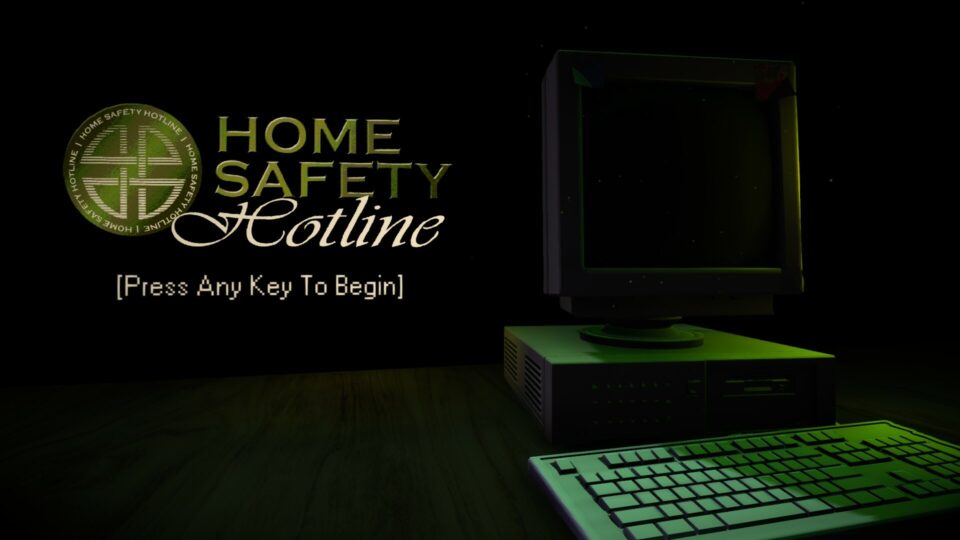
DC: Where did the idea for Home Safety Hotline come from?
Nicholas Lives: I’ve been wanting to make a game about bestiary for a very long time. Just the process of actually reading a bestiary is really fun to me. A game that forces you to read a bestiary just sounded like a very fun project. And it just so happened that the call center idea was a fun way to tie that in with something more contextual and interface-based since we were also influenced by HypnoSpace Outlaw. And just knowing a lot of actor friends who are constantly asking us if we have any projects that need voice acting, it was nice to say yes to that finally.
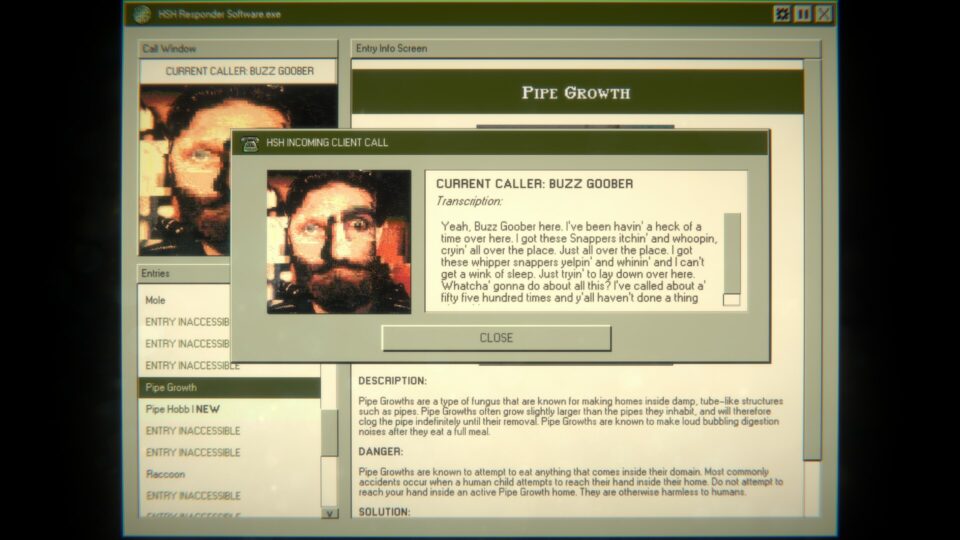
DC: How long has Home Safety Hotline been in development?
NL: Since 2020, we have been planning, and 2023 is where we properly started on it. Then it was sort of a side project that we would do between our other projects with our other studio. We were working on this while we were working on Camp Canyon wood.
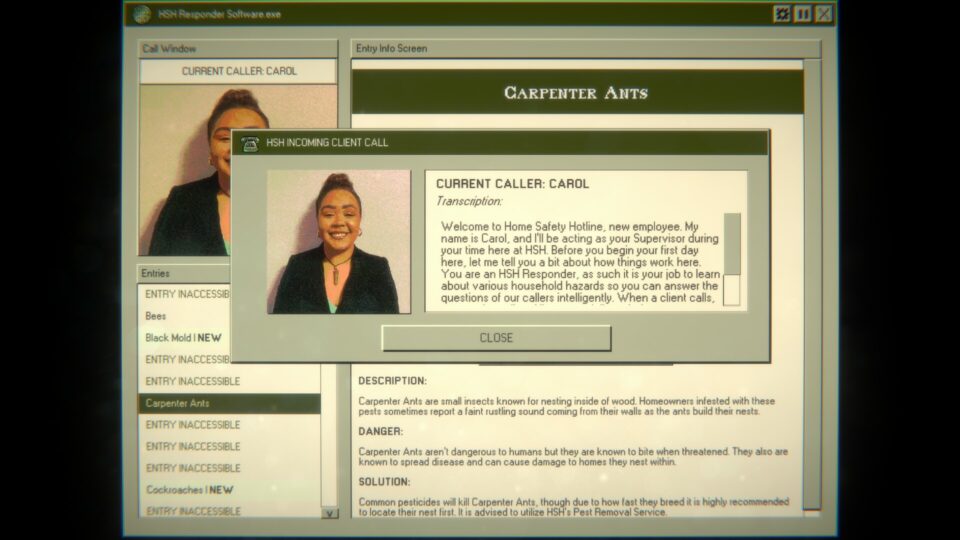
DC: Everything starts normal. There’s a bit of weirdness going on, but then we slowly drop the player off into the deep end. How did that decision come not to start with the weird stuff in the bestiary, and instead slowly reveal it over time?
NL: Originally, they did start off with just the weird stuff. But as we were another, one of our influences for the actual aesthetic and like feel of the game came from analog horror stuff online. So these analog horror series like Gemini Home Entertainment and stuff. We realized how much room we had to start slow because those all start agonizingly slow. And it’s very effective because they’re very good at that. Yeah, start you off with the normal stuff first.
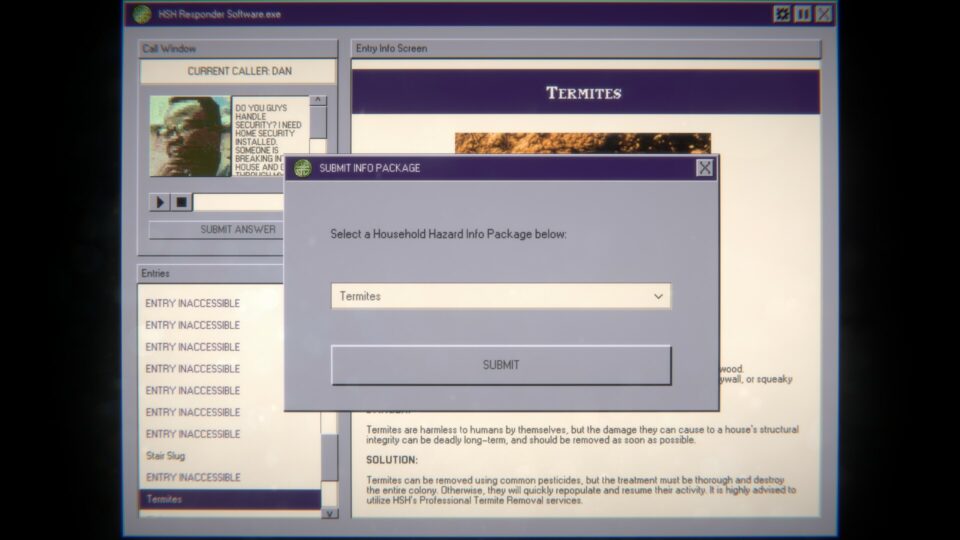
DC: Do you have a favorite entry in Home Safety Hotline yourself?
NL: Oh, yeah, I’m particularly fond of one of the later entries. It’s a thing that lives under your bed. Because I just had a fun time writing music by myself there. And by David’s new sounds that he made for it recently so, it’s fresh on the mind.

DC: That tied in perfectly because I was going to ask, how do you come up with the noise samples?
David Johnsen: Yes, there comes from a variety of stuff. I’m definitely a fan of using like, lots of free sounds is a nice space to work with, but then doing a lot of audio processing. But generally speaking, kind of trying to emulate it coming out of the equivalent of like a Windows 95 machine. So you have a lot of low-fidelity sounds when sounds are recorded, and you’re hearing things that have been recorded, especially when they’re people who are recording them on homemade microphones or whatever.
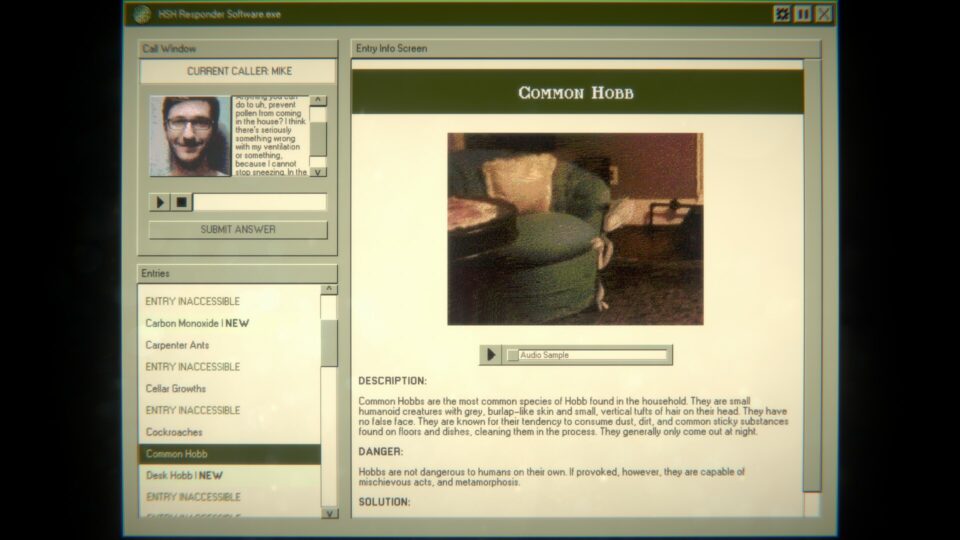
DC: You mention analog horror a lot. Do you have one specifically that you have drawn the most inspiration from? Or is it just like the genre as a whole?
NL: I tend to draw the most from Gemini Home Entertainment. And the ones similar to it are Local 58 and, to a degree, Eventide Media Center. Those three are very close to the flavor we are going for the most.

DC: What’s been the biggest lesson you’ve learned in making Home Safety Hotline?
NL: One that strikes me is just coming off of our other project, which featured a lot of tutorials and heavy hand-holding because it had unfamiliar mechanics. You don’t have to teach the players basically anything if you emulate something they use every day, like a computer. That part has been the most painless tutorial I’ve ever had in any project we’ve worked on. So that is, itself, inherently revealing. I don’t know how far I can take that lesson since games are going to try to do more than that. Playing into a pre-existing player’s knowledge is a very handy tool for a developer.
DJ: That’s a good question. I mean, we’ve tried to go from day to day through the project, map out the progression of what entries unlock from day to day, and see how they interact mechanically. There are some times when we try to be sneaky and kind of deceptive, like, oh, maybe it’s this particular entry. Or maybe it’s this one. They kind of have some similarities. You have to read between the lines, and you have to read carefully. We were trying to map that out from day to day while maintaining a nice organic progression.
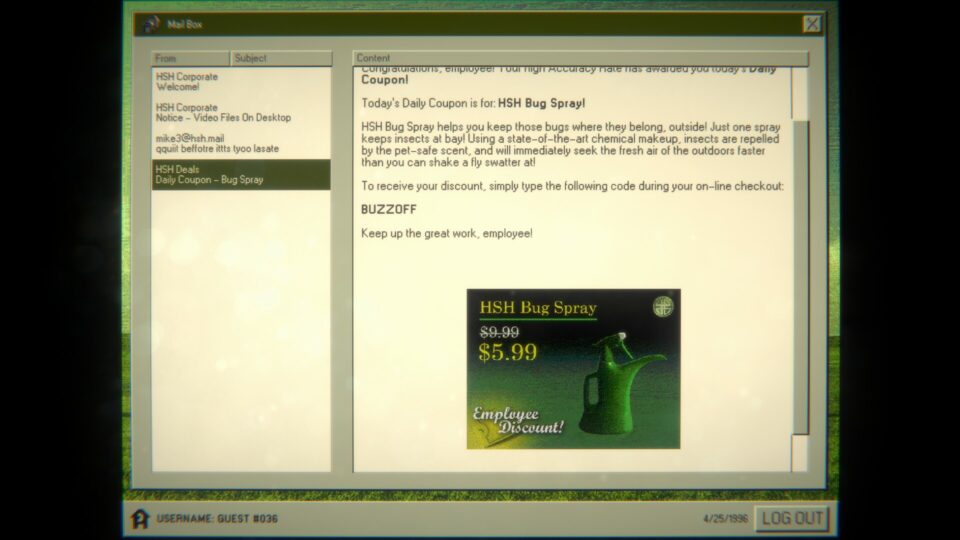
DC: To jump back a little bit to the sounds of everything because I am really interested. Which came first: the visual elements or the sound?
DJ: I definitely worked better when I had some visual stuff to work with first. So Nick would make the visuals and the general lore of the creature. Then I’d have a general idea of what I want it to sound like. But from there, it’s a general vision, like, maybe this one should be a deeper, roaring kind of creature, or this one’s slimier. Or this one’s more tricky and high-pitched. But once I have that vision from there, it’s throwing stuff into my digital audio workstation until I get what I want.
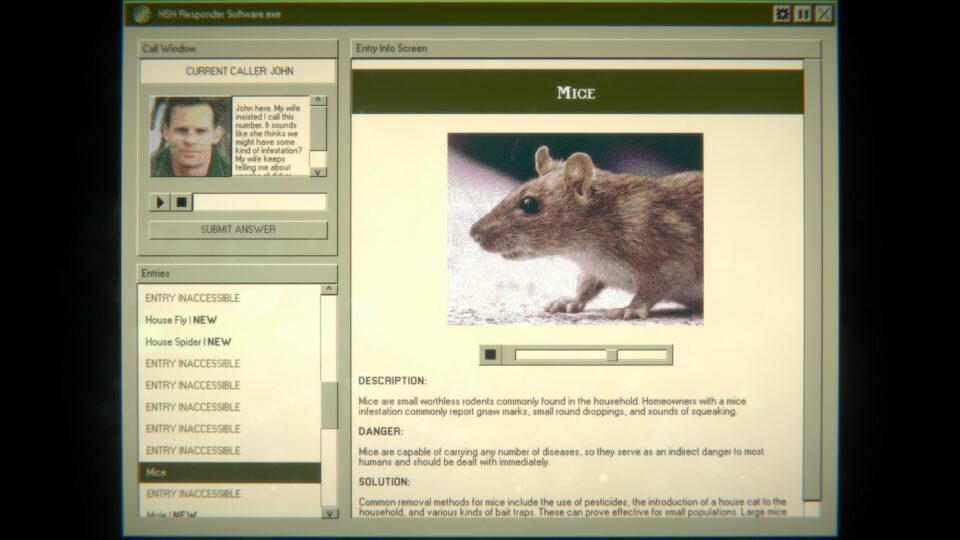
DC: Was there ever one that you saw and you kind of knew immediately what it would sound like?
DJ: It’s a good question. I’m honestly not sure. I felt like I usually had a pretty decent understanding. There were some that were way more abstract. Maybe I can answer the opposite. One of the entries is whistling mushrooms. It was like, what is that? What is that going to sound like? Organic? Do I want to make this? So something comes to mind, but generally speaking, I had a decent idea of what I want and how I want it stuff to come across.
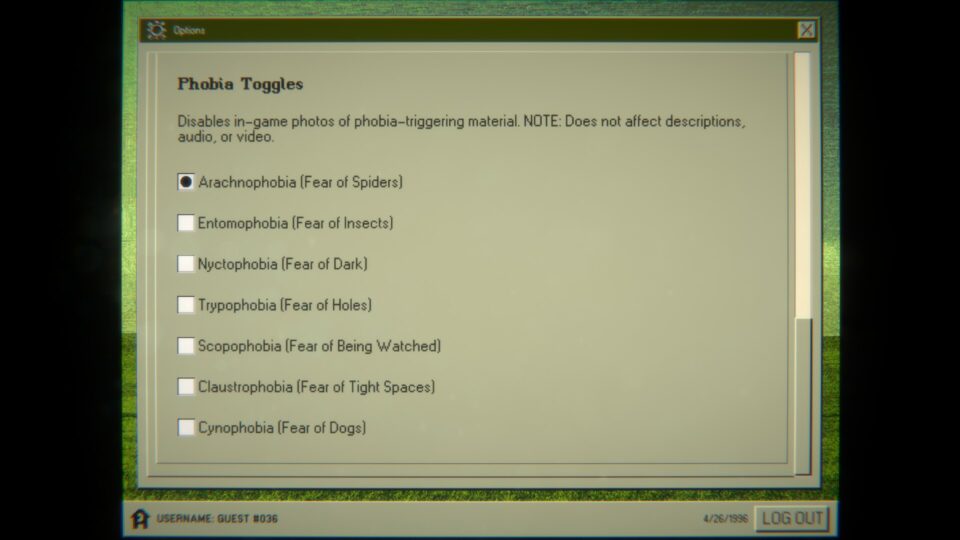
DC: As someone who has arachnophobia myself, thank you for the option to blur them in Home Safety Hotline. I really appreciated that. I noticed the other choices for insects and kinds of things that you typically wouldn’t think of when it comes to accessibility for these kinds of games. How did you guys come up with these specific blockers for those and the idea to put those blockers in?
NL: It’s from the fact that my wife loves playing all sorts of games, but she also has a very deep arachnophobia. And so, if she wanted to play our game, she wouldn’t because if there’s a chance of a spider appearing in it. You want to be scared but don’t want to be genuinely panicked to play a horror game. And so once we added one, it was pretty easy to add more. So we just looked up the most common phobias. We got a broad spectrum of them, the most common ones and the ones that many people don’t know they have, like they have a very visceral reaction to when they find out they have, which is the holes. I forget what it is called, the one where you are afraid of holes in your skin and stuff. Yeah, that one also caused a player to walk out of the room.

DC: What does playtesting a game like Home Safety Hotline look like?
NL: Oh, I mean, for in this case, it’s been really all over the place. We’re just bringing whatever friend of ours hasn’t played it yet. But this one is, you only get one play test per player. Because it’s all information-based, you can’t rely on them for another playtest at the moment that you have the information. And so we’ve had to be sparing with our playtests, and we have to really pick and choose when we’re going to do them. It’s just been family and friends that we’ve roped in and just kind of sat and watched them and, you know, took notes on which things were too confusing, which things weren’t making sense, etc. But it’s been a relatively smooth process.
Both Nick and David seem so excited about Home Safety Hotline and for people to enjoy. Lovers of both analog horror and complex bestiaries are going to find a new home in Home Safety Hotline.
Categorized:Horror Gaming Interviews

